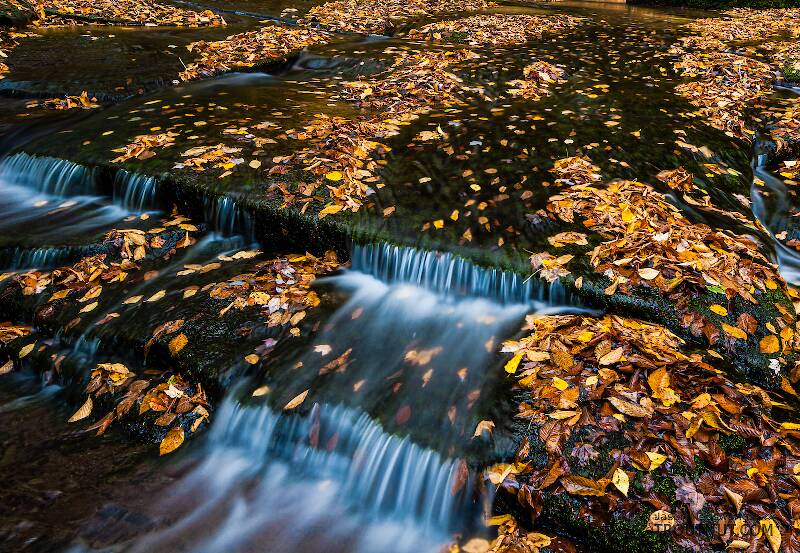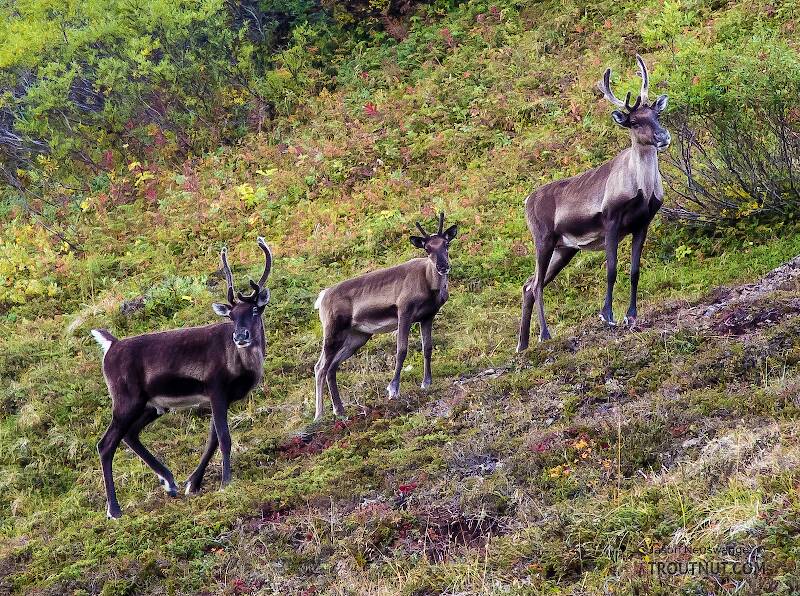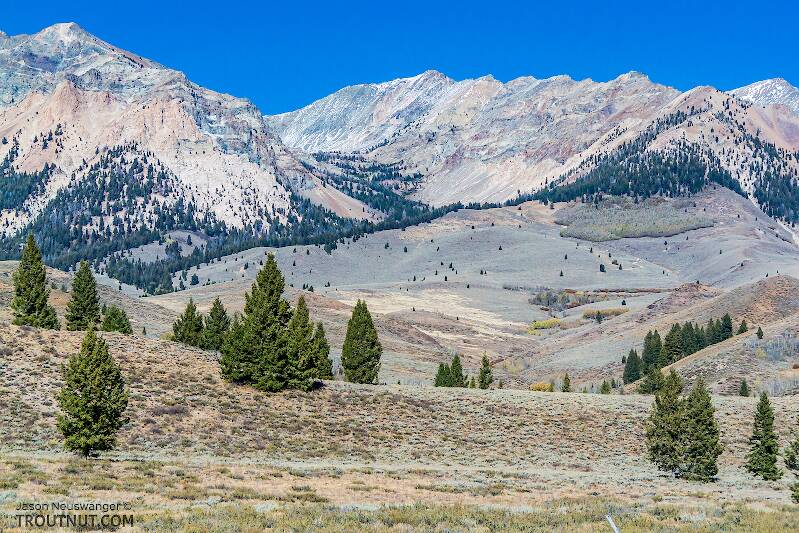September 8th, 2012
After a frigid night in the sleeping bag as the temperature dropped below 20°F, I slept in and woke up to warm sun and clear blue skies. It was time to find out why most people don't shoot a caribou this far off the road.
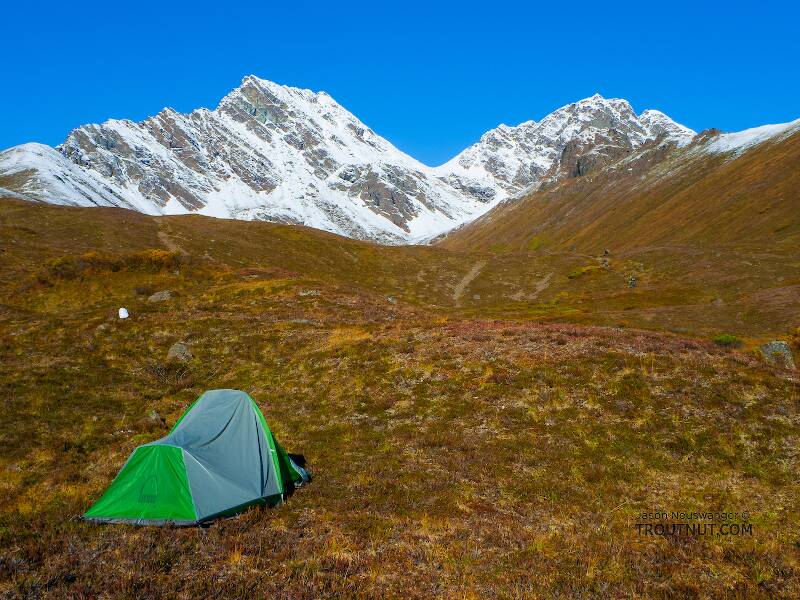
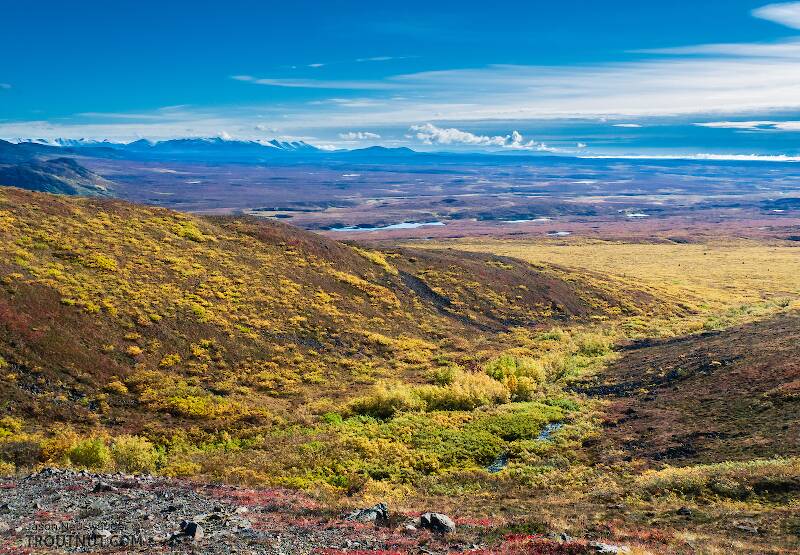
I would spend most of the day taking care of the meat, removing each piece from the game bags, washing the messy ones in the stream, and spraying every surface with a citric acid solution to ward off bacteria and flies. With nowhere to hang the meat up high, I set the cleaned-up bags across the stems of bent willows, which held them just high enough off the ground for good air circulation.
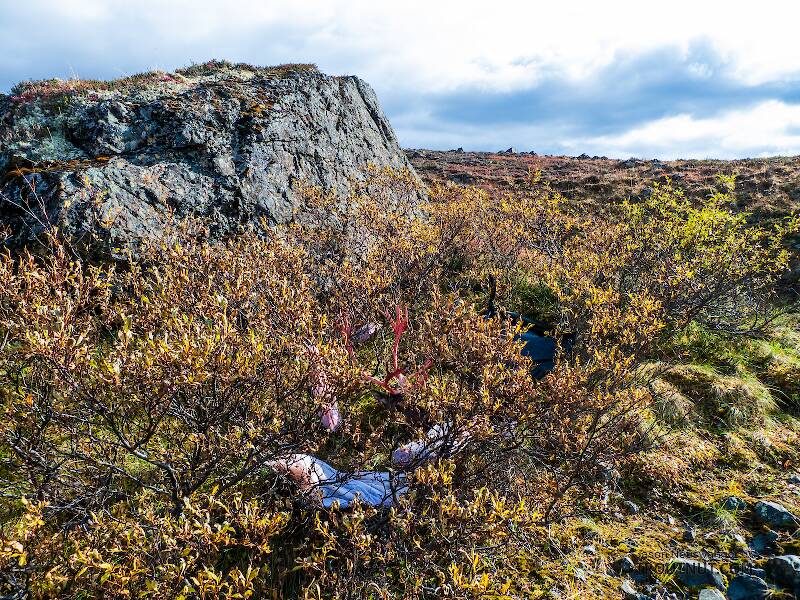
Not in any hurry, I spent about seven hours on the meat, and watched many caribou come and go. First, a large group of cows and calves retraced the steps of my bull's herd from the night before.
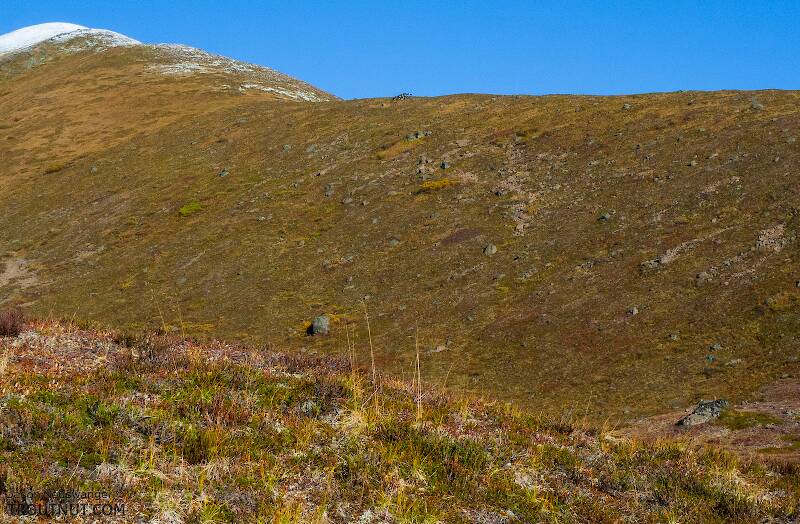
Later, a cow alone with her calf nearly walked into my camp.
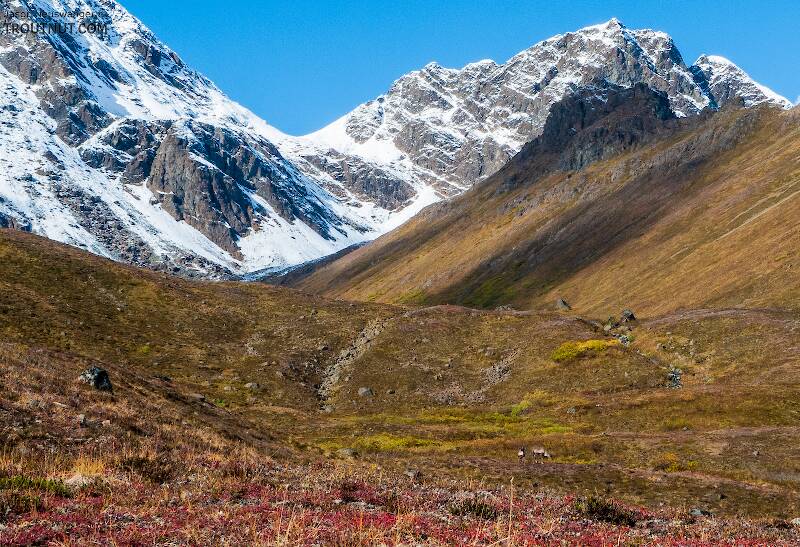
They did their best impression of a two-headed caribou after they were scared off:
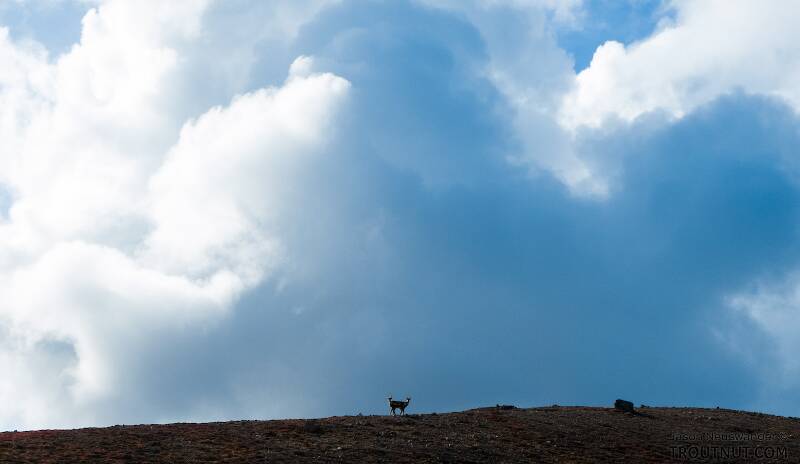
Later on, another large group came over one of the ridges, and it had the only bull I saw that was clearly larger than mine.
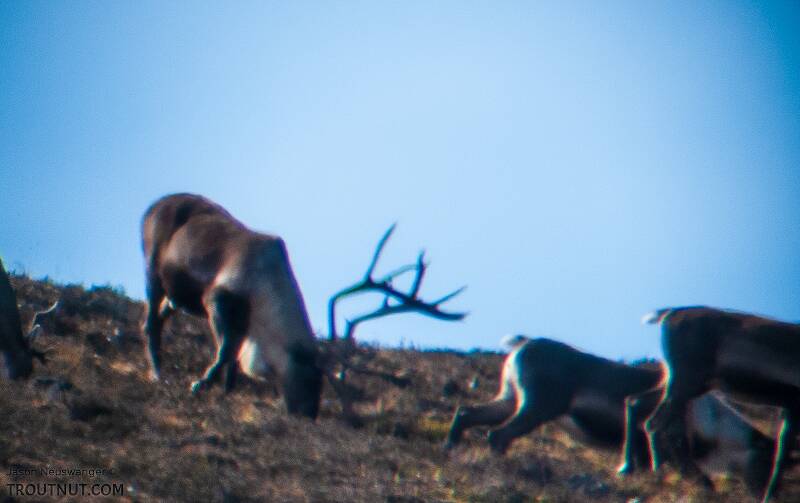
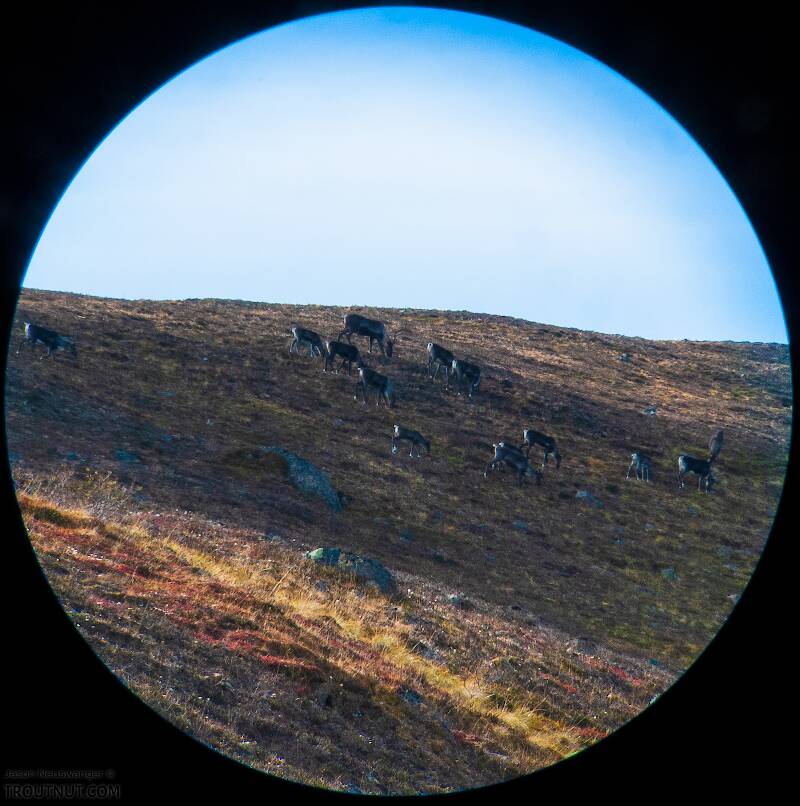
His herd came down the valley and I snuck in for a closer view, where I could have shot on the big bull at 200 yards had I not tagged out already. His massive body dwarfed the cows he accompanied.
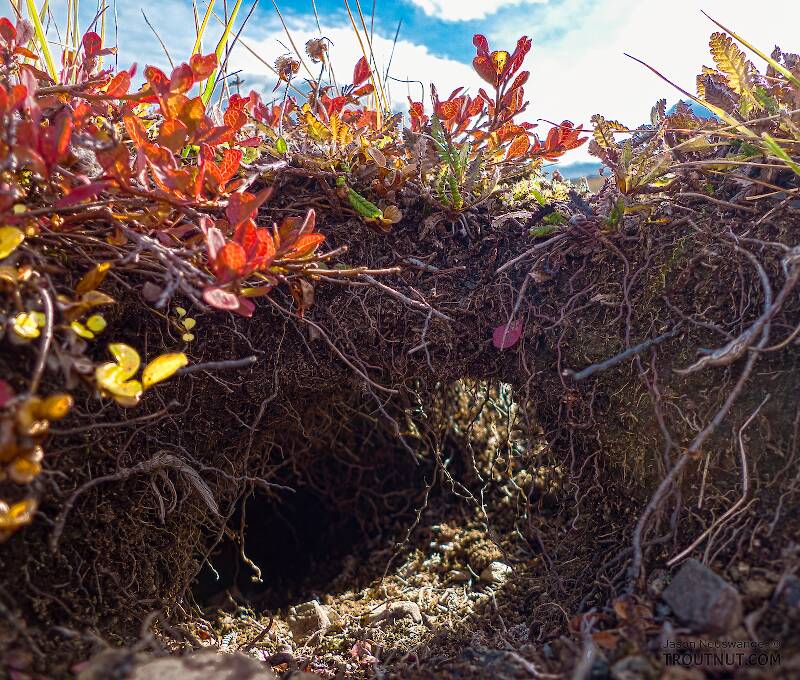
That evening, I made the first heavy trip back to the car, in one hour for the first mile and a half of tundra, and two hours to crash through the last mile of thickets. A view from the pack out:
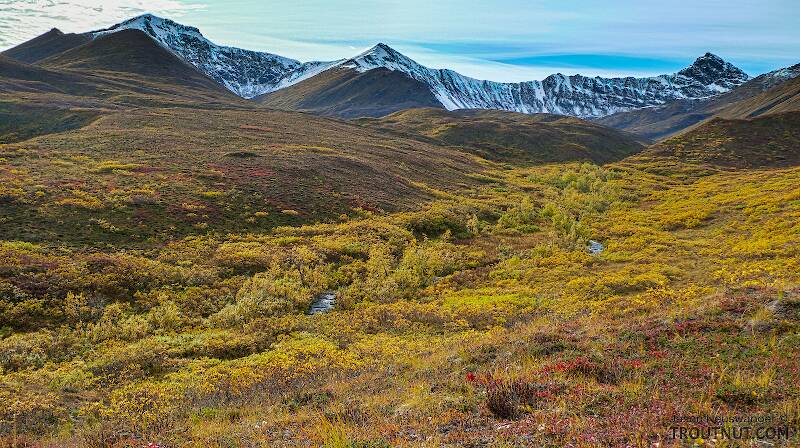
I checked in again at the Alpine Creek Lodge for a hot meal and to register my kill online with Fish & Game. I slept in the car, hoping no bears or wolves would find my meat cache.
September 9th, 2012
I hoped to take the last two loads out the next day, but I made the stupid decision to try to bypass the lowland thickets by getting up high where the mountains come closer to the road, and walking twice as far. I faced nearly as much annoying brush, and miles of tiring side-hilling. It took four hours and almost five miles to reach my kill site this way. My small camera had failed, so I was carrying my DSLR with a big lens, and I got plenty of chances to photograph about 100 caribou on the hike in, all cows and calves (or bulls too small to tell apart from them).
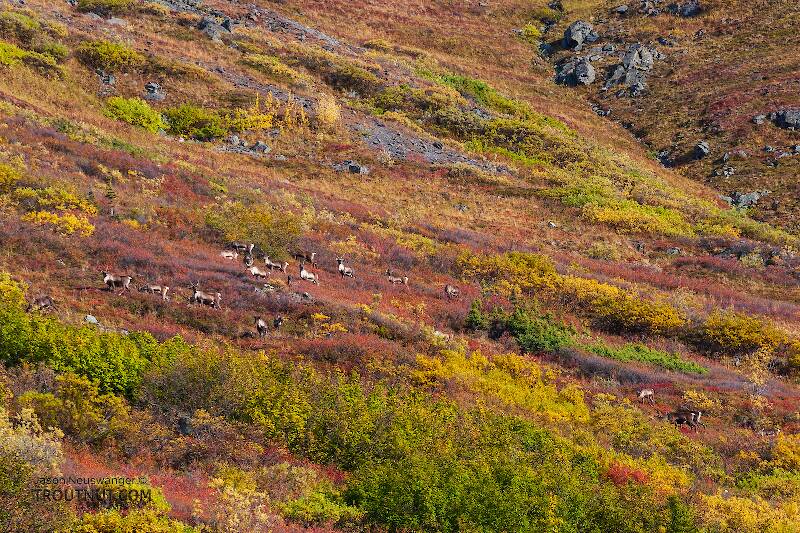
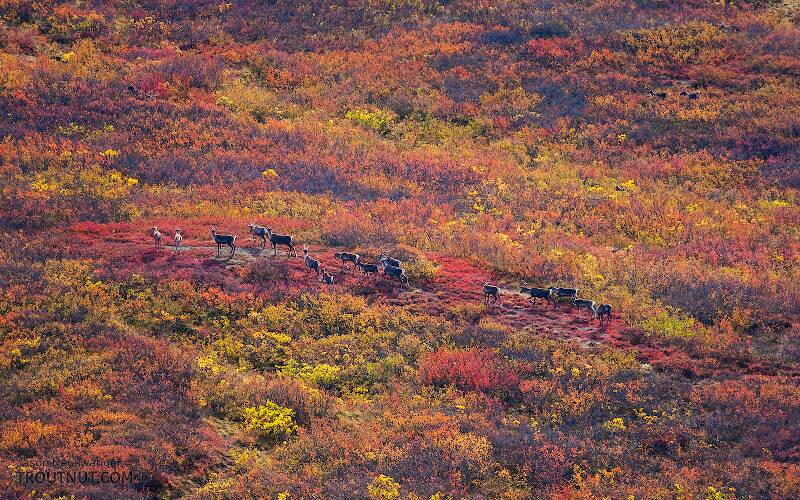
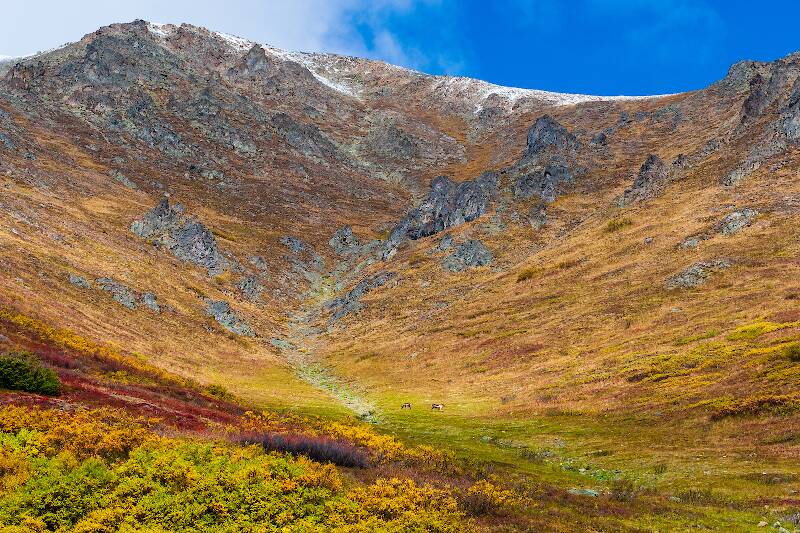
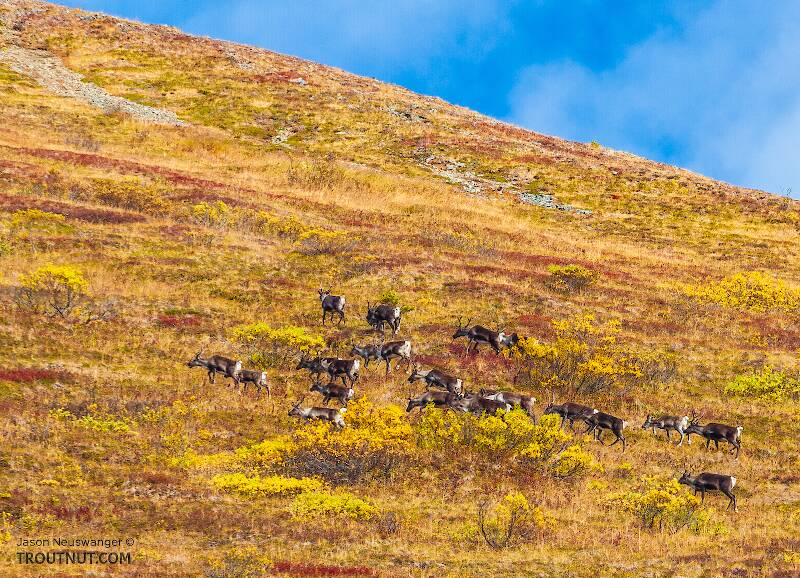
The long walk in left me with too little daylight to pack out two loads, so instead I took a few hours to clean out the skull for a European mount. I had stripped the velvet earlier, just after the kill, since it was beginning to fall off on its own, and it only took a minute to strip.
The wind was really howling through the valley on this day, so I tried to get out of the wind in a depression behind a big boulder to work on the skull. As I kneeled down close to the rock face, I found the spot already claimed:
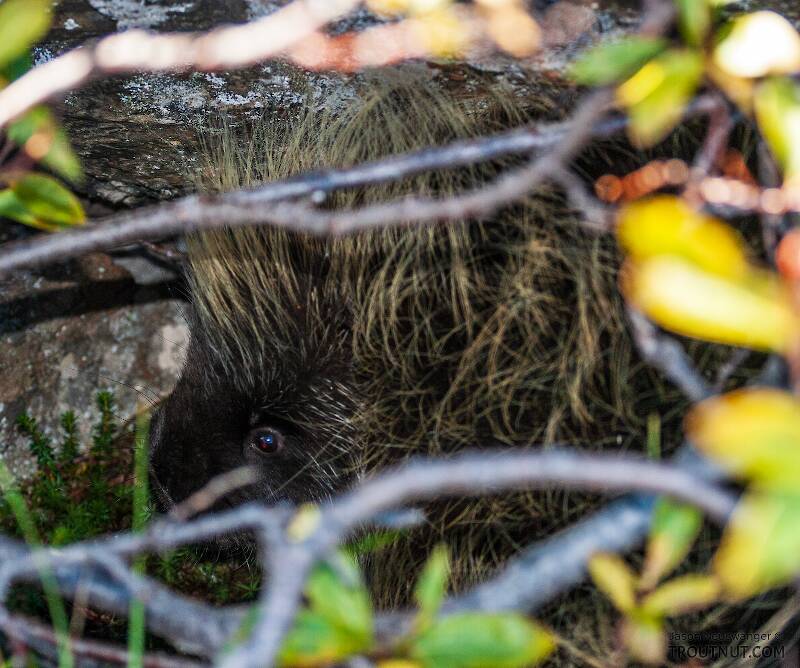
I didn't feel like disputing him, so I worked out in the wind instead.
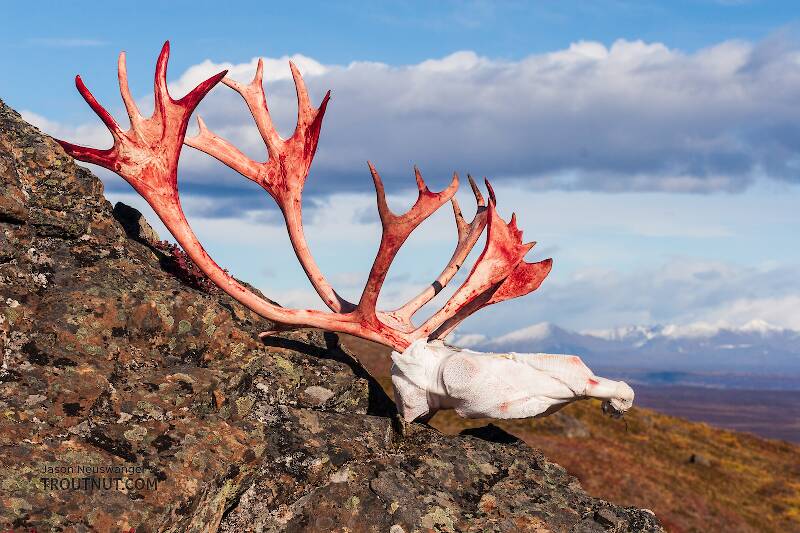
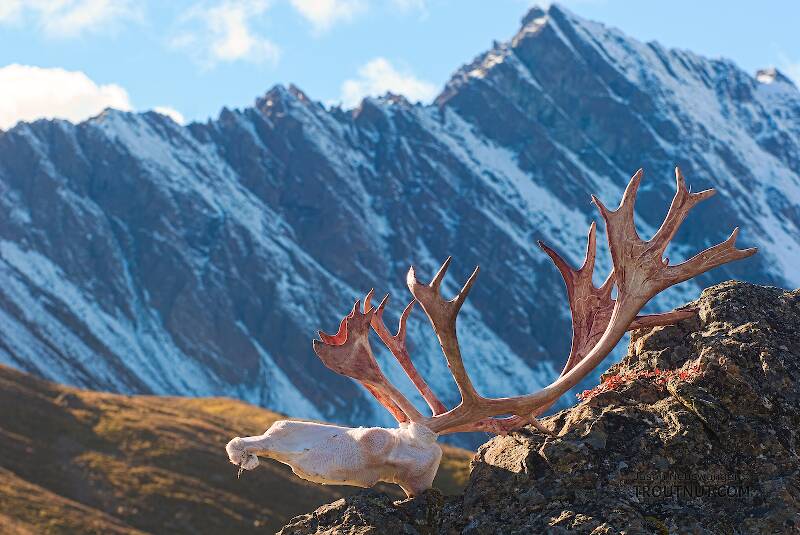
After that break, I took the heaviest load of meat and began another three-hour pack out. As I exited my valley and reached a view of the flatland below, I saw antlers and ducked down. I snuck up close to the edge and started snapping pictures of two decent bulls from as close as 60 yards:
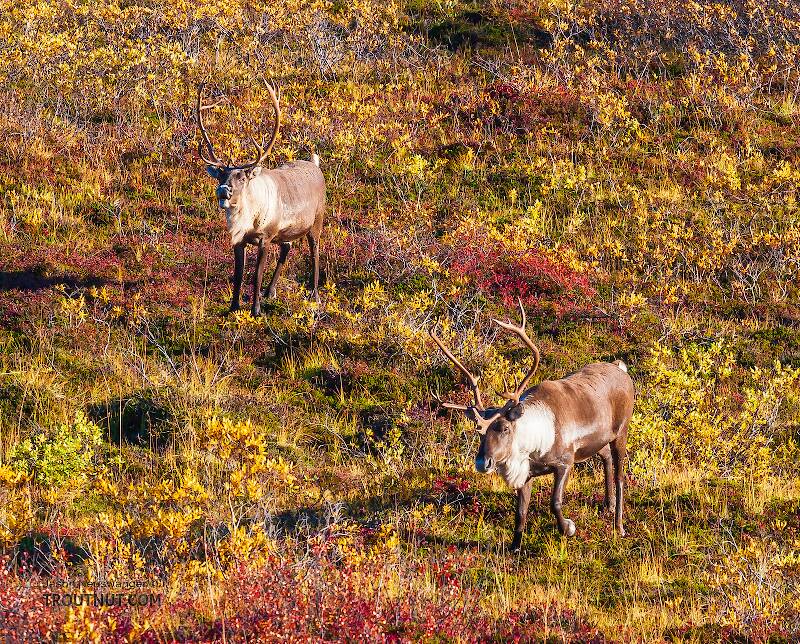
They saw me and heard my camera, but did not run away. Just as many of the small groups of cows and calves had done, their reaction to seeing something suspicious was to try to circle downwind, even walk a little bit closer, and try to catch my scent to determine what I was. I enjoyed their antics for several minutes before they finally winded me and ran off. I saw no more caribou on the pack out, but the view of the mountains kept my eyes entertained.
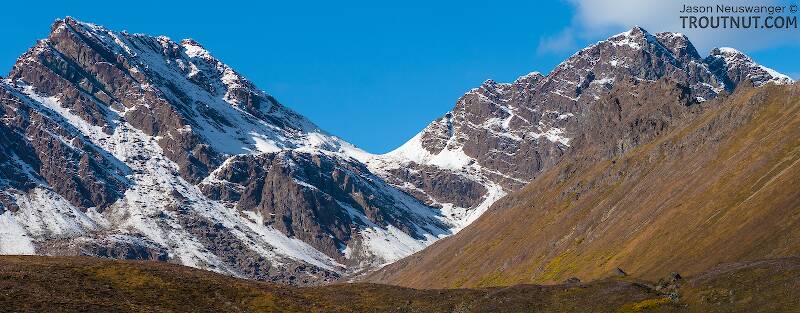
By now, I had found what seemed to be the best combination of game trails to guide me through the thickets. Only about 5% of the trip now consisted of busting through this pathless, nasty stuff:
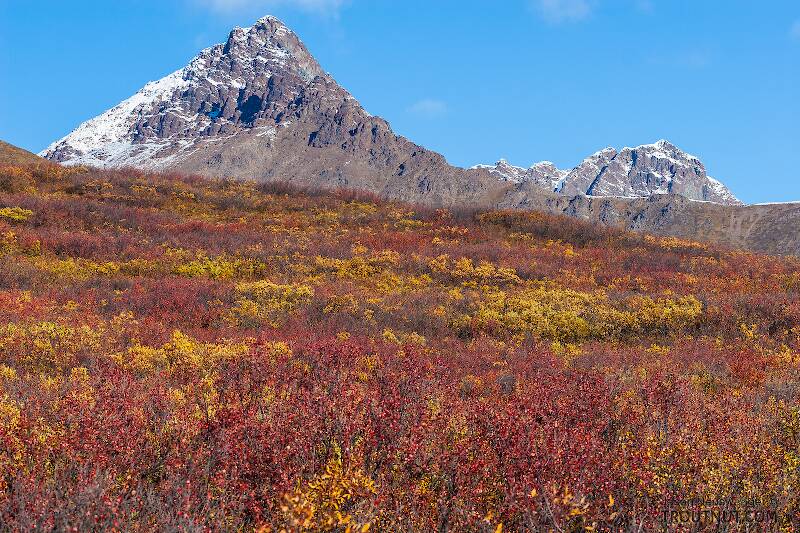
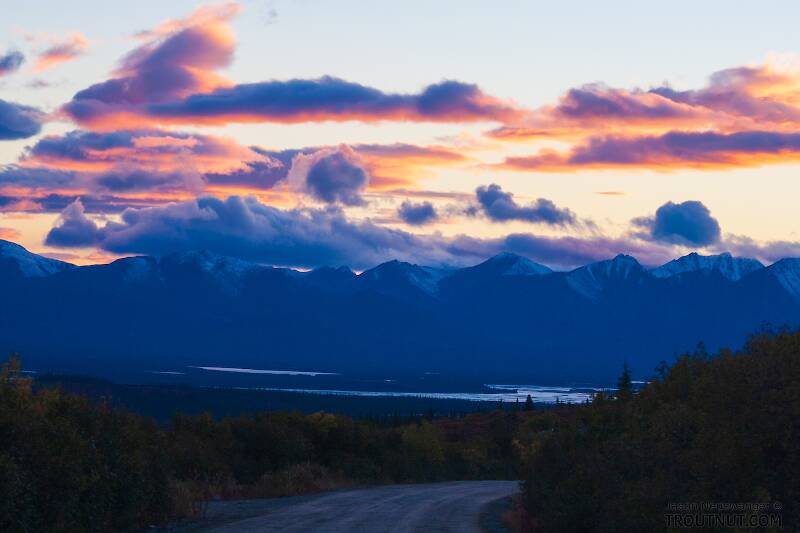
September 10th, 2012
After another night in the car, I made one last, efficient run out to the kill -- two hours in, two and a half hours out -- to get the remaining meat, my camping gear, and the skull and antlers. I only saw one lone calf walking in, and this cow and her calf walking out:
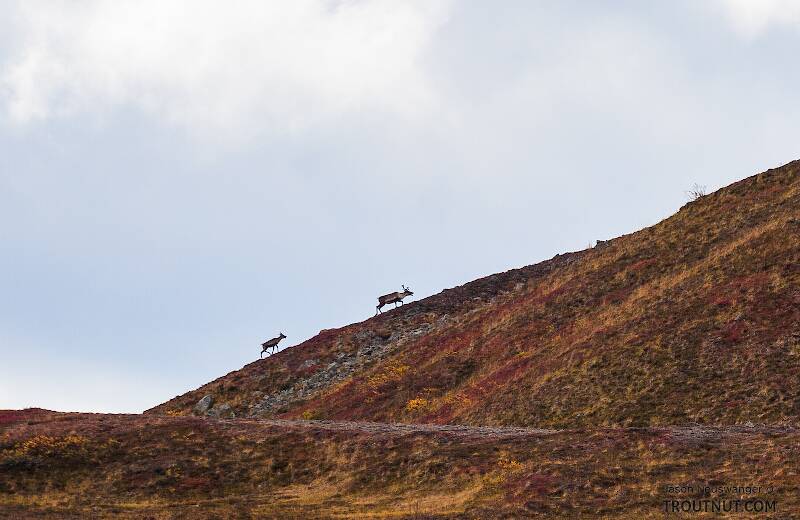
Happy and exhausted after three days of packing and meat care, I was headed home.
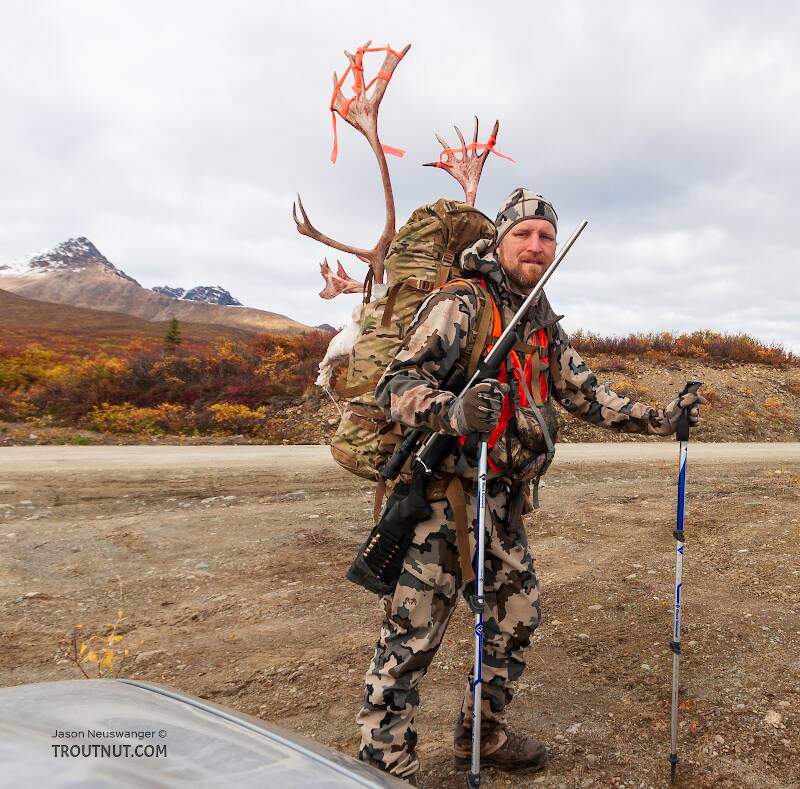
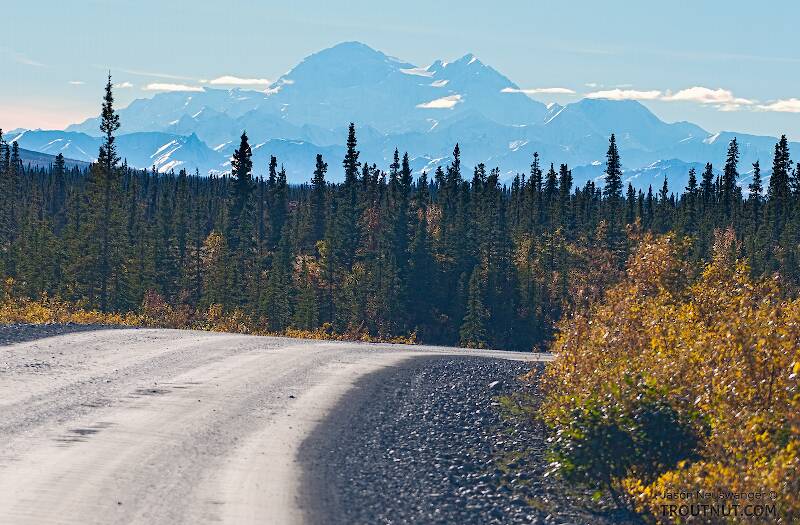
I wasted no time getting to the tenderloins:
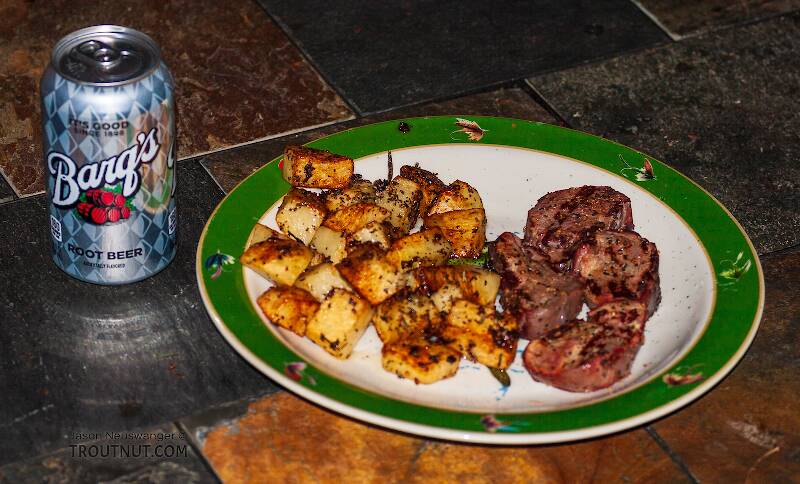
That concludes the story. On the next page, I review what I learned about my gear.


